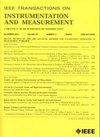Virtual Radar Model and Processing for All-Directional Measurements of Vital Signs
IF 5.9
2区 工程技术
Q1 ENGINEERING, ELECTRICAL & ELECTRONIC
IEEE Transactions on Instrumentation and Measurement
Pub Date : 2025-06-26
DOI:10.1109/TIM.2025.3583384
引用次数: 0
Abstract
To address the limitations of the radar horizontal field of view (HFOV), this article proposes a novel virtual frequency-modulated continuous-wave (FMCW) radar model to achieve simultaneous all-directional measurements through the integration of rotation motor and radar. However, weak vital signs are susceptible to interference from vibrations caused by the torque ripple of motor, which leads to the generation of ghost objects and phase noise interference. First, a Doppler combination filtering (DCF) method is proposed to localize the subjects and suppress interference from torque ripple vibrations, utilizing multiple Doppler frequencies associated with breathing for improved precision. Second, an adaptive convergence variational mode extraction-weight pair accumulation (ACVME-WPA) method is proposed to separate breathing and heartbeat signals from the phase signal affected by motor vibration. This method incorporates two key ideas: one involves determining the adjustment rate of the penalty value based on the iterative differences between center frequencies and the other focuses on aggregating multiple phase signals using weighted pairs to enhance performance by considering the HFOV overlap of adjacent virtual radars. Experimental results show that the proposed methods can achieve all-directional measurements of localization, respiration rate (RR), and heartbeat rate (HR) for single subjects with various breathing patterns, with HR mean absolute error (MAE) of 0.026 Hz in the breath-holding experiment, and also work well for multiperson scenarios with different angles and window lengths. In the four subjects’ experiment, the proposed method still works even when subjects are not facing the radar. For right-side orientation, the RR and HR MAEs were 0.007 and 0.025 Hz, respectively.面向生命体征全方位测量的虚拟雷达模型与处理
针对雷达水平视场(HFOV)的局限性,本文提出了一种新型的虚拟调频连续波(FMCW)雷达模型,通过旋转电机和雷达的集成实现同步全方位测量。然而,微弱的生命体征容易受到电机转矩脉动引起的振动的干扰,从而导致鬼影物体的产生和相位噪声干扰。首先,提出了一种多普勒组合滤波(DCF)方法,利用与呼吸相关的多个多普勒频率来定位受试者并抑制转矩脉动振动的干扰,以提高精度。其次,提出了一种自适应收敛变分模式提取-权对累积(ACVME-WPA)方法,将呼吸和心跳信号从受电机振动影响的相位信号中分离出来;该方法包含两个关键思想:一是基于中心频率的迭代差值确定惩罚值的调整速率;二是考虑相邻虚拟雷达的HFOV重叠,利用加权对对多个相位信号进行聚合,以提高性能。实验结果表明,该方法可以实现不同呼吸模式下单个受试者的定位、呼吸速率(RR)和心跳速率(HR)的全方位测量,屏气实验的HR平均绝对误差(MAE)为0.026 Hz,并且可以很好地用于不同角度和窗长的多人场景。在四名受试者的实验中,即使受试者没有面对雷达,所提出的方法仍然有效。右侧方向的RR和HR MAEs分别为0.007和0.025 Hz。
本文章由计算机程序翻译,如有差异,请以英文原文为准。
求助全文
约1分钟内获得全文
求助全文
来源期刊

IEEE Transactions on Instrumentation and Measurement
工程技术-工程:电子与电气
CiteScore
9.00
自引率
23.20%
发文量
1294
审稿时长
3.9 months
期刊介绍:
Papers are sought that address innovative solutions to the development and use of electrical and electronic instruments and equipment to measure, monitor and/or record physical phenomena for the purpose of advancing measurement science, methods, functionality and applications. The scope of these papers may encompass: (1) theory, methodology, and practice of measurement; (2) design, development and evaluation of instrumentation and measurement systems and components used in generating, acquiring, conditioning and processing signals; (3) analysis, representation, display, and preservation of the information obtained from a set of measurements; and (4) scientific and technical support to establishment and maintenance of technical standards in the field of Instrumentation and Measurement.
 求助内容:
求助内容: 应助结果提醒方式:
应助结果提醒方式:


